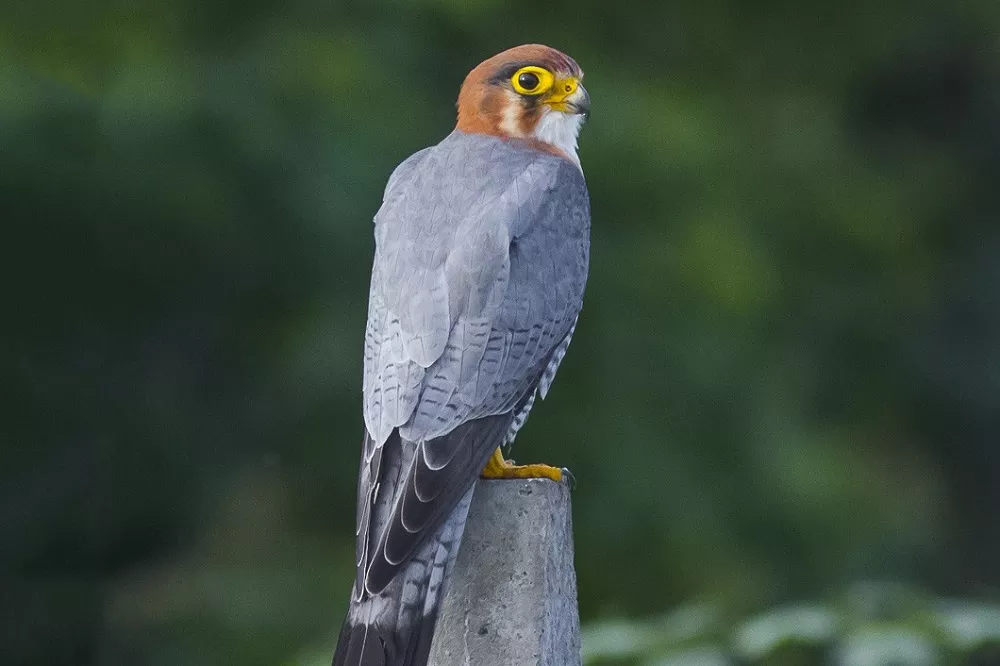The red-necked falcon (Falco chicquera) is a captivating bird of prey known for its striking appearance and remarkable hunting skills. As an avid bird enthusiast or someone simply curious about these magnificent creatures, understanding the habitat and range of the red-necked falcon is key to appreciating its natural environment. In this article, we delve into the habitat preferences and geographic distribution of the red-necked falcon, shedding light on where these birds can be found in the wild.
Overview of Red-Necked Falcons
Red-necked falcons (Falco chicquera) are medium-sized birds of prey that belong to the family Falconidae. They are known for their striking appearance, with reddish-brown feathers on their necks and backs and white underparts. The males are slightly smaller than the females, measuring about 30-35 cm in length and weighing around 200-250 grams.
These birds are agile hunters, preying on small mammals, birds, and insects. They use their sharp talons and strong beaks to catch and kill their prey before consuming it.
Red-necked Falcon Habitat Preferences:
The red-necked falcon primarily inhabits open grasslands, savannas, and agricultural landscapes, demonstrating a preference for semi-arid and tropical regions. These habitats provide an abundant source of prey and suitable nesting sites, enabling the falcon to thrive in diverse environments.
Geographic Distribution of the Red-necked Falcon:
The red-necked falcon is widely distributed across various regions of Africa and Asia, showcasing its adaptability to different climatic conditions. Let’s explore its geographic range:
Africa:
Sub-Saharan Africa: The red-necked falcon is found throughout the vast expanse of sub-Saharan Africa, spanning from Senegal and Gambia in the west to Ethiopia and Somalia in the east.
Southern Africa: It can be observed in countries such as South Africa, Namibia, Botswana, Zimbabwe, and Mozambique.
East Africa: The falcon’s range extends to countries like Kenya, Tanzania, Uganda, and Rwanda.
West Africa: In West Africa, it can be found in countries such as Nigeria, Ghana, and Cameroon.
Asia:
Indian Subcontinent: The red-necked falcon has a presence in India, Nepal, Bangladesh, and Sri Lanka.
Southeast Asia: It can also be spotted in parts of Myanmar, Thailand, Laos, Vietnam, and Cambodia.
The exact distribution and abundance of red-necked falcons within these regions may vary, influenced by factors such as food availability, habitat suitability, and breeding patterns.
Nesting and Roosting Sites:
Red-necked falcons typically nest in tree cavities, especially those excavated by other birds, such as woodpeckers. They may also occupy abandoned nests of other raptors. These nesting sites offer protection and seclusion for rearing their young. Additionally, red-necked falcons are known to roost communally, gathering in groups within dense foliage or secluded tree branches.
Migration and Seasonal Movements:
The red-necked falcon is generally a non-migratory species. However, it may exhibit some seasonal movements within its range in response to changes in food availability or climatic conditions. These movements may involve relocating to areas with higher prey densities or seeking more suitable nesting sites.
Conservation Status:
The red-necked falcon is not currently listed as globally threatened or endangered. However, local populations may face certain conservation challenges, such as habitat loss due to agricultural expansion, deforestation, and urbanization. Ensuring the preservation and protection of their preferred habitats is crucial for maintaining healthy red-necked falcon populations.
Conclusion:
The red-necked falcon’s habitat preferences and geographic distribution make it a captivating species found across various regions of Africa and Asia. Its ability to adapt to diverse environments, from open grasslands to agricultural landscapes, demonstrates its resilience. By understanding the natural range and habitat of the red-necked falcon, we can appreciate and support conservation efforts to safeguard these remarkable birds for future generations to enjoy.


 Facebook
Facebook  Instagram
Instagram  Youtube
Youtube 